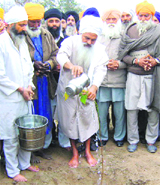
Guest blogged by resistsingh
March 23rd, 2011 marked the Anniversary of the Martyrdom of Shaheed Bhagat Singh.
Bhagat Singh is a legend in many circles, a man who gave his life to secure the freedom of India from Colonial Rule. Today, many celebrate his bravery and he has become somewhat of an icon. Unfortunately, like other popular revolutionaries, such as Che Guevera the content of his revolution is lost.
Like the many oppressive systems we face everyday, our identity is consistently a target – a means to keep our community impotent, by robbing us of our history, our motivation and association to revolution and social justice. With that in mind, we should always be aware of the ideologies, the motivations and the history behind those we celebrate. Bhagat Singh is no different.
So today, we share a quote with you all, from the Final Petition of Bhagat Singh before his death, one that eloquently describes his resistance to Imperialist and Capitalist ideology and one that we should hold to our hearts as we celebrate his life. As injustice continues to prevail, the greatest honour to the shaheedi of our ancestors is to understand their struggle, today.
“Let us declare that the state of war does exist and shall exist so long as the Indian toiling masses and the natural resources are being exploited by a handful of parasites. They may be purely British Capitalist or mixed British and Indian or even purely Indian. ” – Bhagat Singh
As a continuation of the conversation initiated by Navdeep’s post “Fatting it Up at the Langar Hall,” I want to share this the trailer for Soul Food Junkies, a film-in-progress directed by African American filmmaker and activist Byron Hurt.

The parallels to the challenges we face in the Punjabi community were striking to me as I watched the trailer. Obesity and diabetes are epidemics in the African American community, just as they are in our community, both in Punjab and the diaspora. And there is no doubt of the central role that diet plays for us all.
This post by our Mehmaan is none other than Harinder Singh. About Harinder Singh – he works with the Sikh Research Institute and the Panjab Digital Library to address all things Sikhi and Panjabi. http://twitter.com/1force
I have taken some time off to be Mr. Mom while my wife is on a work assignment in India. In preparing to make the move to Bangalore, I was excited about being in the land of MS Subbulakhsmi (renowned Carnatic vocalist) and Kalmane (locally grown 100% Arabica beans) coffee. Being here for about three weeks, this is what I have discovered: people are nicer than the North, infrastructure is horrible, and there is not much to see in the city. Even Frommers.com couldn’t come up a list of not-to-be-missed attractions in Bangalore, though people in India claim it to be a great city. I guess the new IT opulence has brought in pubs and gigs only (it is common for Indians to end almost every sentence with ‘only’).
Yesterday, I picked up my son Jodha Singh from the pre-school he is enrolled in here. His teacher said, he wouldn’t play Holi (“Festival of Colors”—though bastardized; some “celebrants” today throw sewerage on people as well!). Now, the legend of Holika is vanishing and so too the spirit of post harvesting thanksgiving prayer to the Almighty. Apparently, Jodha was upset when other children were throwing water and colors on him. I told Miss Priya that his aversion may have come because he has not partaken in this festival as the Sikhs of Panjab have a little reason to celebrate. She wasn’t sure how to respond; do most Panjabis and Sikhs know how to “play Holi?”
 The aftermath of last Friday’s earthquake and tsunami in Japan is nothing short of horrific. I’m sure most of you have seen footage of the devastation on the news and on YouTube. My mind is boggled, my heart is aching, and I am all in all extremely overwhelmed by what is happening.
The aftermath of last Friday’s earthquake and tsunami in Japan is nothing short of horrific. I’m sure most of you have seen footage of the devastation on the news and on YouTube. My mind is boggled, my heart is aching, and I am all in all extremely overwhelmed by what is happening.
While I haven’t heard about any specific Sikh responses or relief efforts yet, United Sikhs, which sent a team to Haiti after last year’s huge earthquake, has a Japan earthquake/tsunami page up on their website. If you know of any efforts happening, please post them in the comments section.
While we keep the people of Japan in our thoughts and prayers, there are many ways we can be taking action. Below are a few simple things you can do to provide support. This is not intended to be a comprehensive list, so please add your own suggestions.
 Immigration is a popular topic on The Langar Hall. Many of us being immigrants ourselves, if not the children of immigrants, the topic often hits home. Still anytime the topic of ‘illegal immigration’ takes place (at least here in the United States), many Sikhs believe that it is the problem of Mexicans. Despite the fact that many of us know, have family members, have ourselves come to this country without ‘legal’ documentation, still the problem is that of another.
Immigration is a popular topic on The Langar Hall. Many of us being immigrants ourselves, if not the children of immigrants, the topic often hits home. Still anytime the topic of ‘illegal immigration’ takes place (at least here in the United States), many Sikhs believe that it is the problem of Mexicans. Despite the fact that many of us know, have family members, have ourselves come to this country without ‘legal’ documentation, still the problem is that of another.
A recent article in the Los Angeles Times helps explode this myth:
About 650 Indians were arrested in southern Texas in the last three months of 2010 alone. Indians are now the largest group of immigrants other than Latin Americans being caught at the Southwest border…Most of the immigrants say they are from the Punjab or Gujarat states.
I strongly suggest Langa(r)eaders to take a look at the article. Interestingly enough, despite the importance of the issue, few Sikhs really engage with the issue. Most Sikh advocacy organizations in the US (SALDEF, Sikh Coalition, etc.) are sympathetic to the issue, but hardly promote action or dialogue within the community. In fact, the institution that most deals with the issue are our local Gurdwaras.
I am pleased to announce the Sikh youth as taking a strong engagement with the issue. The College Sikh collaborative has teamed up with the Jakara Movement, to create the first all-SSA Alternative Spring Break (ASB). This pilot project will look at the issue of immigration through working with border human rights groups, working with families of day laborers, speaking to law enforcement officials, and visiting numerous sites to engage with the issue. If you are free on the dates – March 23-25, 2011, do register (hey, actually do something during your spring break!). THE DEADLINE FOR REGISTERING HAS BEEN EXTENDED until Sunday, March 20, 2011! I hope to provide a report of the initiative afterwards.
Guest blogged by santokh
A couple days ago I was reading some news articles on Hondh Chillar and Pataudi. Some of these articles include photographs from the two big events that took place at Hondh Chillar–clean up of the destroyed gurdwara building and Akhand Paath that took place thereafter in that building. I was talking to a couple friends about what all of this means for us as Sikhs, as youth with a vested interested in all things Punjab but separated from it by distance, and as a generation that, despite a fascination and infatuation with Punjab and Sikhi, seems disconnected to the memory of 1984 in many ways.
I was born a year after Operation Bluestar, no one from my family or relatives were directly affected by the genocide, my grandparents didn’t live close to New Delhi, Amritsar, or any of the other affected areas–Hondh Chillar and Pataudi, for example. As I was talking with my friends, I realized our awareness of Bluestar comes from websites, media, press releases by advocacy groups, a few books and essays, and the occasional speech at gurdwara or elsewhere almost as an annual ritual in June and November. It’s almost a kind of dynamic I can chart out–come the first week of June and November, emotions run high and my inbox is filled with invites to a number of vigils and memorials.
If I view the memory of Bluestar from the perspective of a generation before mine, everything changes. Many of my friends’ parents and grandparents were directly affected in 1984 as victims and/or witnesses. They have a direct connection to and memory of Bluestar. They know what media channels did and did not report, each of them is a walking memorial in a sense.
By now you’ve probably heard about Wisconsin governor Scott Walker’s attack on working class people and labor unions in Wisconsin. This week, Walker’s bill, which undermines public sector workers’ right to collectively bargain and slashes their benefits, among other things, passed through the state Senate, without a single Democratic Senator present for the vote, and the Assembly, in the face of three weeks of massive protests, the largest demonstrations in Wisconsin since the Vietnam War.
The Washington Post reports:
Wisconsin Gov. Scott Walker won his drive to strip the state’s government workers of nearly all of their collective-bargaining rights Thursday, after a three-week standoff that brought tens of thousands of protesters to the Capitol.
The new legislation represents a major setback for organized labor, but the political battle over public employees and their rights to bargain is likely to continue – not only in Madison.
The state Assembly passed Walker’s proposal a day after Republican senators outmaneuvered the 14 Democratic senators who had fled Wisconsin to deny a quorum needed for passing a budget measure. By stripping the bill of its spending language, they were able to pass it with only Republicans present.

An exhibition showcasing British Bhangra music and Culture, titled ‘Soho Road to the Punjab’, will be crossing the pond from the UK to New York City on March 18th 2011 at 6pm. The USA version of the exhibition, Soho Road – Five Rivers to Five Boroughs, will be the world’s first visual arts exhibition inspired by Bhangra music and culture held outside of the UK. The event is being hosted by 92YTribeca and is free to the public.
Originally debuting in Birmingham, UK, Soho Road to the Punjab is an exhibition that includes photography, album sleeves, promotional art and rare prints from South Asian media. This contemporary archive uncovers the worldwide Bhangra phenomenon, showcasing individuals who have championed the UK and USA Bhangra scene.
“Soho Road – from the Five Rivers to the Five Boroughs” is a gift of a title. The Punjab is, of course, the Land of the Five Rivers, while New York iconically comprises Brooklyn, Queens, Manhattan, Staten Island and the Bronx. This is a symmetry just too much too leave alone – it’s a sign! Queens is the largest and the most diverse, and famous as the birthplace of bebop and jazz. Queens also has the largest Sikh population outside California and the highest concentration of Indians anywhere in America. Punjabi is in the top ten of the hundred-odd languages spoken locally, and almost half of all South Asians who live in New York live in Queens. The NY experience will shape the show for the USA. [link]
The event will be held at 92YTribeca, 200 Hudson Street, New York. For more information and to view the exhibition online, see the Facebook page.
Guest blogged by Preserve Architectural Heritage
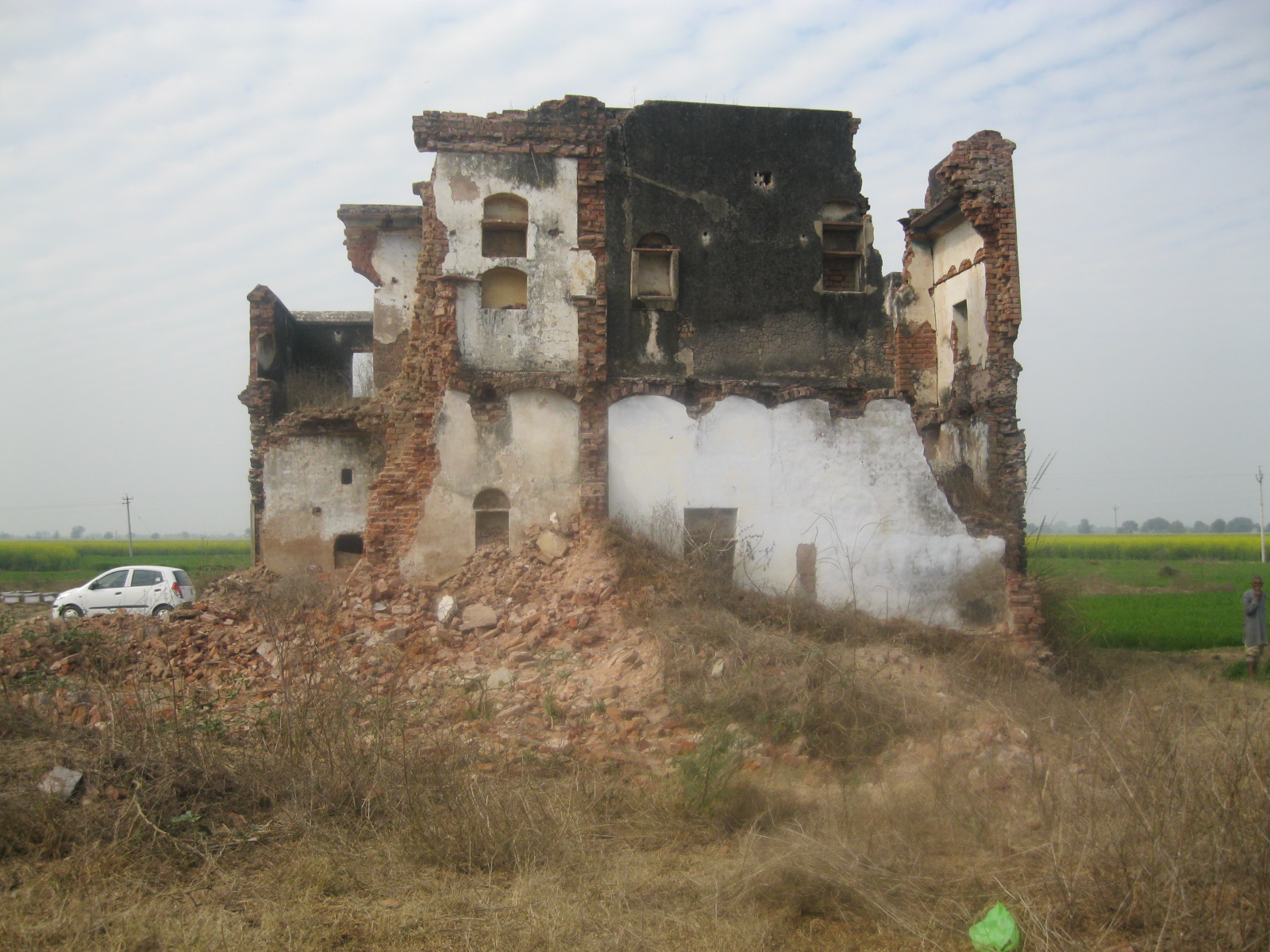 What: discovery of two sites linked to 1984: (1) Hondh Chillar, discovered January 2011. (2) Pataudi, discovered Februrary 2011. Both are in Haryana. Excerpts from Press Releases from Sikhs for Justice reveal that 32 men, women, and children were brutally tortured and killed in Hondh Chillar and 17 in Pataudi.
What: discovery of two sites linked to 1984: (1) Hondh Chillar, discovered January 2011. (2) Pataudi, discovered Februrary 2011. Both are in Haryana. Excerpts from Press Releases from Sikhs for Justice reveal that 32 men, women, and children were brutally tortured and killed in Hondh Chillar and 17 in Pataudi.
Why is this discovery important: So far all the investigation into the violence of 1984 has been done via interviews, eyewitness accounts, judicial commissions, and lawsuits. For the first time, we have living evidence of the genocide: the buildings speak for themselves. Though there are thousands of names on the ever-growing list of those killed in 1984, many of us have very little connection to those names since we don’t personally know the families. Even if some of us know or are related to survivors of the violence, it’s difficult and painful to have those individuals recollect and narrate their memories and experience.
Those of us with no familial connection to Operation Bluestar, those of us who were too young to remember, or were not born when this genocide tookplace now have a physical, tangible, alive, and direct relationship to this significant period of Sikh history through these sites. Since memory of any tragic event is intrinsically linked to physical location[s], it is absolutely crucial that we realize the value of Hondh Chillar and Pataudi as sites that provide us with a direct link to the memory of 1984. They are living sites, open for everyone to access and connect with. They are silent victims, that, just like the human victims of 1984, represent a crucial moment from the recent Sikh past.
Today, March 8th, is the 100th annual International Women’s Day!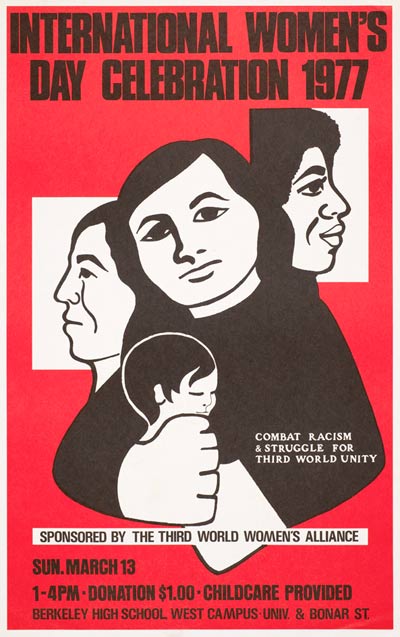 This year’s theme is “Equal access to education, training and science and technology: Pathway to decent work for women.” The first International Women’s Day was celebrated in 1911 in Austria, Denmark, Germany, and Switzerland, and is the brainchild of Clara Zetkin, a leader in the Social Democratic party in Germany, who fought for a space where women could press for their demands. This day is a celebration of the ability for women and men use our voices to advance gender equality, and the need.
This year’s theme is “Equal access to education, training and science and technology: Pathway to decent work for women.” The first International Women’s Day was celebrated in 1911 in Austria, Denmark, Germany, and Switzerland, and is the brainchild of Clara Zetkin, a leader in the Social Democratic party in Germany, who fought for a space where women could press for their demands. This day is a celebration of the ability for women and men use our voices to advance gender equality, and the need.
Gender equality has been central to Sikh social, economic, and political life since the time of the Sikh Gurus. Bebe Nanaki was the first Sikh in history to recognize Nanak as her Guru. Under Guru Amar Das Ji women were central to Sikh administrative manji system. The women of Meer Mannus prison endured extreme forms of torture and watched their children slain before their eyes but stood strong against the corrupt and brute governor of Lahore and his compatriot Kaura Mal. Fearless women warriors like Mai Bhag Kaur, Bibi Baghel Kaur, Bibi Daler Kaur stood on the frontlines of the Khalsa fauj to defend the marginalized and oppressed against authoritarian rule. Today we stand with brave Sikh women of the past and present, Mata Khivi Ji, Bibi Amrao Ji, Bibi Bhani Ji, Mata Gujri Ji, Mata Sahib Kaur, and Bibi Harnam Kaur, whose contributions to Sikhism must not fall into the shadows of Sikh religious, social, and political life as it would go against our own doctrine and values.
Please take minute on watch the clip below by three brave Sikh sisters of today willing to uphold the vision of Nanak with strength and courage. Let’s use this day to reflect on what we can do to move this community to the front lines of the Sikh vision for gender equality. #IWD in solidarity.

The massive pro-democracy uprisings in North Africa and the Middle East have gained tremendous momentum since the successful ouster of Egyptian president Hosni Mubarak two weeks ago. My thoughts and prayers are with the people of Libya this week, as their calls for the end of Moammar Gaddafi’s 42-year reign have been met with brutal repression. Gaddafi’s forces (including mercenary soldiers) have killed an estimated 640 to 1,000 protesters so far in just one week. The world is watching as the people of Libya sacrifice their lives for freedom and self-determination. May Waheguru bless them in their righteous struggle against tyranny.
Check out the below report from ABC News, but note that the message at the end about US-Libya relations is highly misleading. Though the US government has a complicated history with Gaddafi, he has been a strategic ally of the US in the region for over a decade. Until Obama’s statement on Libya just yesterday (after almost a week of brutal repression), the US has turned a blind eye to any human rights concerns in Libya. While his statement strongly condemned Gaddafi’s use of violence against the protesters, Obama stopped short of calling on Gaddafi to step down.

I just came across a great article on the work of Baba Sewa Singh of Khadoor Sahib, Amritsar District, and his remarkable campaign to plant trees across rural Punjab. Well worth a read.
According to [Baba Sewa Singh], they will adopt another 100 villages this year in Bathinda, Jalandhar, Patiala, Amritsar, Gurdaspur and Tarn Taran districts. “We are targeting plantation of at least 500 trees in each village, which would make a total of 50,000 trees in 100 villages every year,” he added.
Forests are vital to maintaining ecological balance in air, water and soils across Punjab. At present, only 6.5 percent of Punjab is under forests, which is even lower than the desert state of Rajasthan at 9.5 percent. Though the Punjab government plans to increase forest cover to 15 percent by 2017, ensuring that forests benefit the average person in Punjab will an important indicator of success in any afforestation effort financed by the state. Planting indigenous and native species like kikar, tahli, jamun, and neem trees, along with fruit trees in homes across villages will help ensure that the benefits derived from healthy, productive forests reach the many who still live in Punjab’s rural areas.
A Review of Mandeep Sethi’s Poor Peoples Planet, released January 2011. 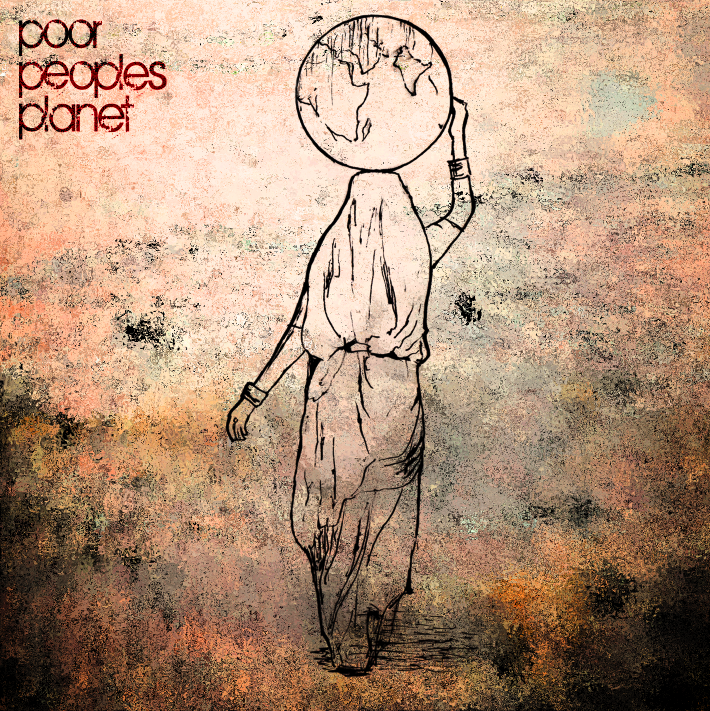
With an unmistakably laid-back, West Coast hip hop sound, 22-year old Sikh rapper Mandeep Sethi brings us the dynamic and often incendiary (while maintaining the mellow Bay area vibes) Poor Peoples Planet. Inspired by the gypsy hip hop teachings of Xitanos Matematikos and the history of gypsies in Punjab, Sethi, a San Francisco-based artist, flows over meditative and at times haunting melodies and samples not typical of a hip hop record.
Embodying the Khalsa spirit, the album (Sethi’s third) begins with a twist on a jakara, with the track, “JahKaRa.” The jakara was originally a revolutionary call and response battle cry—a call to arms in a sense—that is of course used today to end Ardas and in times when we need some extra Guru-inspired enthusiasm and courage. This album’s “JahKaRa” begins in Spanish and flows into Sethi welcoming the listener to “the pueblo” before a series of Punjabi jakaras propels us into the experience of Poor Peoples Planet.
[Moving Swiftly::][GuerillaTactics][POORPEOPLESPLANET by Mandeep Sethi
Continue Reading »
I recently came across information about Speaking in Tongues, a documentary which follows four diverse children on a journey to become bilingual. As the website states, “At a time when 31 states have passed “English Only” laws, four pioneering families put their children in public schools where, from the first day of kindergarten, their teachers speak mostly Chinese or Spanish.” Before I continue, take a peek at the trailer:
The film discusses the growing need that parents are feeling to raise their children multilingual.
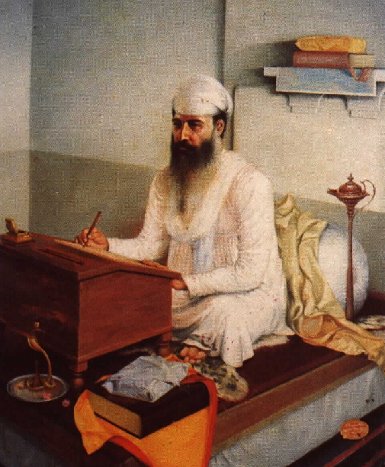 Guest blogged by Pataka
Guest blogged by Pataka
As a student interested in Sikhism, visiting the library can be a somewhat dismal affair. Searching for academic works on Sikhism leads to few results. Searching for specific topics within Sikhism – for example, gender and Sikhism, lead to even fewer results.
The elitist institutionalization of scholarly research has often excluded marginalized groups and voices: those whose native language is one other than English, members of the working class who cannot afford to pay tuition and fees, single parents, seniors, people living with disabilities, immigrants, refugees and so on. It’s no stretch to imagine that one of the reasons that there is such little research available on Sikhism is due to the fact that we are a marginalized community, both in India and in the diaspora.
While many ‘professional networking’ organisations targeting Sikhs exist, the elitist spin on these events exclude those who may not be ‘professionals’ – students, stay-at-home parents, the unemployed or retired. A push towards inclusive, collaborative open-access community events highlighting Sikh research can foster healthy debates, increase social interaction between different generations of Sikhs on topics of interest, and ensure that Sikh history and Sikh thought are included within the large canon of scholarly literature. Democratizing academic research can also facilitate collaborations between academics and Sikh community groups on issues of concern.
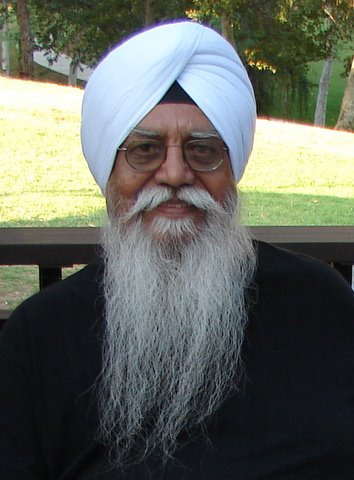 Rare are those sevadars that give their entire life to the Qaum. They are our jewels. Earlier this week, we lost one.
Rare are those sevadars that give their entire life to the Qaum. They are our jewels. Earlier this week, we lost one.
Captain Kanwar Harbhajan Singh, popularly known as Papa Ji, was the tour de force behind the International Institute of Gurmat Studies (IIGS). His family, friends, and network taught a generation of Sikhs how to connect with their Guru. They held camps throughout the world – from India, to Punjab, to California, to Canada, and many other countries in between.
He had his detractors; he had his critics. Yet, no one ever questioned his nishkam seva and dedication to his community. He inspired so many and we hope that through them his spirit will live on. A website has gone up allowing people to share their memories. It can be visited here.
It also gives some summary of his incredible journey
With great sorrow in our hearts, we inform you that our dear Papa Ji, Captain Kanwar Harbhajan Singh, has completed his worldly journey. He passed away on January 30, 2011. He will be greatly missed by the entire IGS family around the world. Papa ji dedicated his life to spreading the message of the Gurus, constantly motivating the future generations to maintain their Sikh identity. We will miss him dearly and pray that Waheguru ji give us all the strength to carry on his message.
Click below the fold for information on his bhog and ardas that will be held on February 5, 2011.
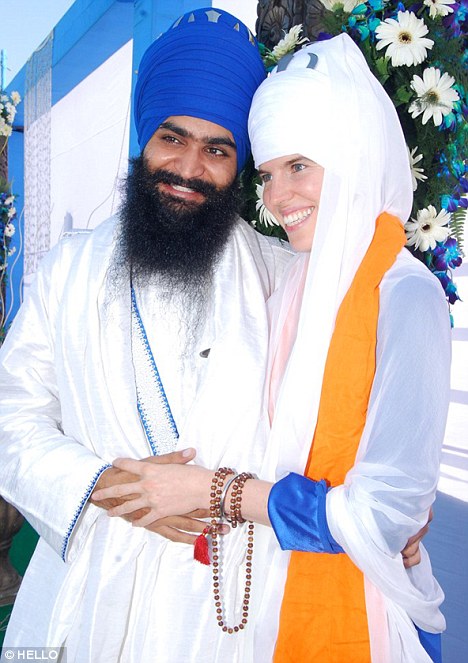 So it is my mother use to tell me. This particular marriage, however, seems to have been made at Darbar Sahib (as close to heaven, as I’ll ever get!). UK’s tabloid press has reported on the wedding of Harvinder Kaur Khalsa (formerly Alexandra Aitken, daughter of disgraced Torty politician Jonathon Aitken) and Inderjot Singh. The picture speaks a thousand words.
So it is my mother use to tell me. This particular marriage, however, seems to have been made at Darbar Sahib (as close to heaven, as I’ll ever get!). UK’s tabloid press has reported on the wedding of Harvinder Kaur Khalsa (formerly Alexandra Aitken, daughter of disgraced Torty politician Jonathon Aitken) and Inderjot Singh. The picture speaks a thousand words.
Just as interesting has been her interest in Sikhi. Below the fold, you’ll find some of her thoughts/observations about her transformation, well worth a read!
Frankly, if someone had told me ten years ago, when I was living the party girl lifestyle in London, that a decade later I’d be a teetotal vegan, I simply wouldn’t have believed them.
If they’d gone on to tell me that I’d also have converted to Sikhism, changed my name to Harvinder Kaur Khalsa and be married to an Indian warrior whom I fell in love with before we even exchanged a single word, I’d have laughed my head off.
After all, I was positively allergic to organised religion. It just seemed so grey to me. But then I don’t really think of Sikhism as a religion, more a path for anyone who is looking for something more spiritual.
While many have heard about SikhRI’s Sidak program, too few have enriched their lives through this unique opportunity to explore and engage with Sikhi. Make this the year you attend – head over to San Antonio from Jun 25 – Jul 9, 2011.
Here is a video promo from last year – mind the date change!. Below the fold, you’ll find some information on the curriculum.
Guest blogged by Navdeep Singh Dhillon
My wife’s family is Hindu, with varying degrees of connections to the religion. Some of them have statues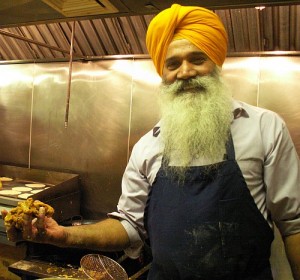 of deities like Krishna and Ganesh scattered throughout the house, others have entire rooms sectioned off for bhajans and pujas, and then there are those, who shall remain nameless, that go on random fasts they can’t explain. “It is a potato diet. I will eat potatoes today. Who else wants aloo parantha and aloo pakodas?” is the only explanation given during fasting for the nine days of Navratri. I still don’t get it. Nor do I get why some Sikhs don’t eat certain foods on Thursdays, or why Jains have such a problem with potatoes because living organisms might be killed, but have no qualms about dousing their bland food with ghee, or eating vast quantities of paneer.
of deities like Krishna and Ganesh scattered throughout the house, others have entire rooms sectioned off for bhajans and pujas, and then there are those, who shall remain nameless, that go on random fasts they can’t explain. “It is a potato diet. I will eat potatoes today. Who else wants aloo parantha and aloo pakodas?” is the only explanation given during fasting for the nine days of Navratri. I still don’t get it. Nor do I get why some Sikhs don’t eat certain foods on Thursdays, or why Jains have such a problem with potatoes because living organisms might be killed, but have no qualms about dousing their bland food with ghee, or eating vast quantities of paneer.
Many of my wife’s family live in a concentrated area in Central Jersey a few minutes from each other. In the neighborhood, there is a Hindu temple, which they visited once, and never returned to. No, not because of politics, or religious differences. The reason: they didn’t like the food. It is a Gujarati Hindu Temple, and they are very Punjabi. So they go out of their way, driving through the most industrial and uninspiring landscape New Jersey has to offer, to eat Punjabi food at the Gurdwara.
The irony is not that they are Hindu and attending a Sikh Gurdwara when a Hindu temple is a few minutes away. Sikhism has, from its inception, been welcoming to all religions, and many of the verses in the Guru Granth Sahib were written by Muslims and Hindus. The four openings at the Harimandir Sahib invite people from all directions and walks of life. The irony is that through their food, which Gujaratis and Punjabis take very seriously, both communities have been the hardest hit by ailments like heart disease and diabetes, affectionately known as “sugar.”
My post is an expansion on Brooklynwala’s post “Working for Langar Justice,” which talks about making the move for our Langar Halls to go organic, a move I highly encourage.
On a recent visit to Amritsar, one of the topics of interest was the newly approved plan by Chief Minister Badal for the revamping of the entrance to the Darbar Sahib. The plan includes a “state-of-art” restructuring of the entrance plaza.
According to one article, the new entrance would address accessibility for pedestrians and eco sustainability. It was also noted in this article that a timeline for completion and budget for this project has not been planned.
While the Panjab government is clearly looking to increase their tourism value, it was made clear to me that many Panjabis are not huge supporters of a project that will change the existing architecture around the Darbar Sahib. There is a strong sentiment that religious buildings should be treated as such, rather than as tourist spots.
The Darbar Sahib complex does rely on funds to ensure sustainability but with plans to enhance the Darbar Sahib with tourism in mind, the Panjab government will be treading a fine line to make sure that the holiest of places for Sikhs does not become impacted by visitors. Nevertheless, the Darbar Sahib is not the first place to be affected by increased tourism. Other “wonders” around the world are also working to address how to balance the sustainability of history with the growing inquisition of visitors.
What do you think? Should the Darbar Sahib be redesigned with tourism in mind or should efforts be made to keep the area intact as an important religious place?
